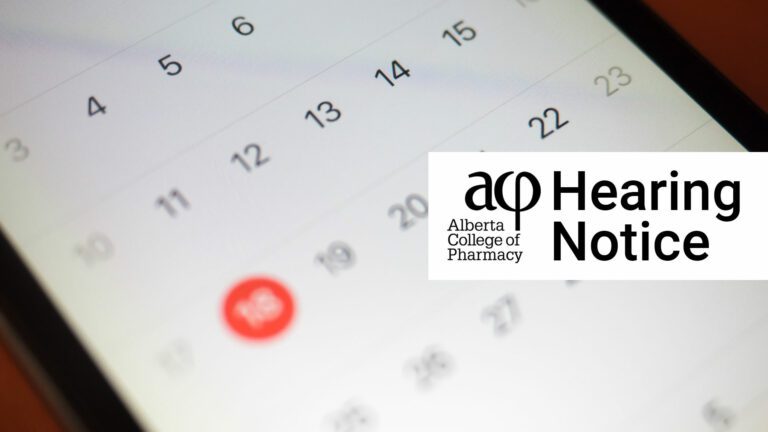Over the past month, the college has investigated several complaints involving registrants who have calculated and then dispensed an incorrect, and potentially dangerous, dose of ranitidine solution for infant patients. Pharmacists and pharmacy technicians are reminded to follow these tips for ensuring accurate calculations:
- Ensure calculations, especially unusual calculations, are consistently documented on the prescription or transaction record and checked by two members of the pharmacy team. If a pharmacist is working independently, have a second pharmacy staff member check the calculations at the earliest opportunity (such as the beginning of the next shift)
- As part of the prescription processing and assessment process, always circle (or otherwise clearly document) medication strengths on written prescriptions that contain a change in a patient’s previous dose.
- Be extra diligent in processing and dispensing “high-alert” drugs, such as prednisone, methotrexate, and warfarin. Not only can high-alert drugs cause significant harm to patients when used in error, but these drugs often require dosing calculations as part of the dispensing process. Pharmacists and pharmacy technicians should regularly review current high-alert drug listings from sources such as the Institute for Safe Medication Practices (see http://www.ismp.org/communityRx/tools/ambulatoryhighalert.asp).
- Implement a warning system for stocked high-alert drugs within the pharmacy and audit the implementation of the warning system quarterly.
- When performing the final check on a prescription, including any required calculations, always check the original written prescription first, before reviewing the prepared prescription bottle or transaction record. (This checking includes never applying a signature to a prescription transaction record until the pharmacist or pharmacy technician has verified the prepared prescription is 100 per cent current, complete, accurate, and appropriate.)
- Ensure that once a critical task has been started (e.g., making/verifying a calculation as part of a final check on a prescription), it is completed without interruption, or if an interruption cannot be avoided, ensure the critical task is repeated from the beginning.
- Specify the length of therapy ordered by the prescriber within the written instructions on the prescription label.
- Specify both the volume and quantity for the calculated dose of all liquid medications within the written instructions on the prescription label, (e.g., Take 5ml (125mg) three times daily for ten days).
- Review and implement the ACP’s Chat, Check and Chart (CCC) tools to assist in patient assessment, as an additional means of verifying the appropriateness of prescription calculations. By more consistently asking the three prime questions, pharmacists and pharmacy technicians can better verify the accuracy of any prescription calculations they are required to make.
- When dealing with a patient’s agent, confirm that the agent is aware of how the patient has been instructed to take the medication and can relate all information provided by the pharmacist back to the patient, such as confirming number of dosage units (e.g., tablets or capsules) to be taken and duration of therapy. If the patient’s agent cannot confirm or relate the necessary inform, contact the patient directly.




